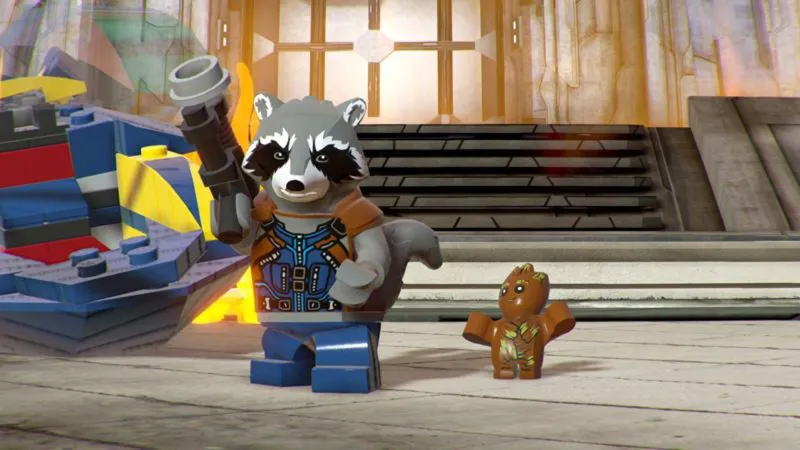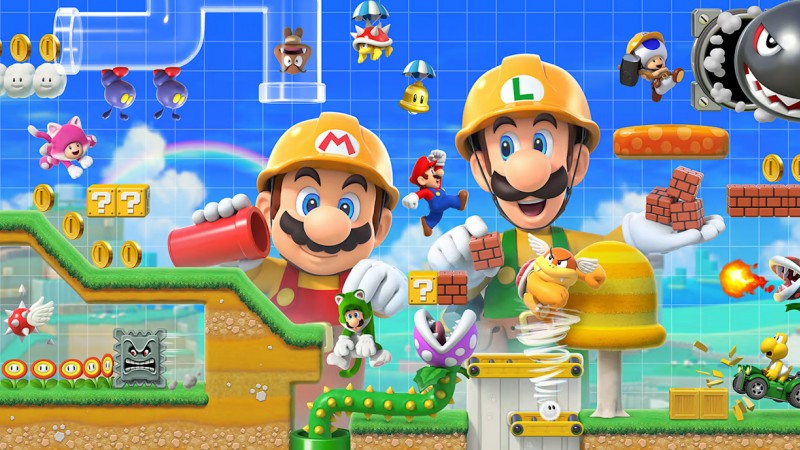Learning To Play – A Guide To Help Your Little Ones Get Into Games
How old should your children be when introducing them to video games? What are the best titles to teach them how to use a controller? Are there games that both a youngster and adult will find equally enjoyable?
As a father of a nine-year-old daughter, I get asked these questions frequently by people with children of their own, and I always stumble with my response as I try to recall the route I took to acclimate her to games. Most kids want to play games at an early age, yet there aren’t many resources out there that help parents and guardians find a safe and rewarding gaming path for their kiddos. I hope this new reoccurring All Ages section helps people find solutions to their children’s gaming needs.
This month’s section focuses on teaching kids how to use a controller first. The games that accomplish this task also help them navigate 2D and 3D spaces.
I’ll offer suggestions for cooperative games, the best non-violent options, genre entry points, and more in the months ahead. If you have questions or want to explore specific topics, drop me a letter at [email protected] with your thoughts.
My efforts to get my daughter into the console gaming space were not easy. Her frustrations with using a controller for the first time were made worse by the fact that a good number of licensed children’s games are downright awful and don’t appear to take their targeted age group to heart. That said, we found a handful of games that are fantastic entry points. Here’s where to start.

The First Game
I’m guessing most of you have visions of your child playing one of your all-time favorite games as their first. Just know that that playthrough won’t go well at the age of three or four, but it will make for a great photo that you can cherish forever. Once you get the pictures out of the way, I recommend docking a Switch to your TV and having your child’s first game be Super Mario Maker 2. For years I suggested parents try the original Super Mario Maker with their kids, delivering results. Many of these kids developed the base skills needed to open the doors to the entire gaming world.
Why did I choose the Mario Maker series over the other more popular Mario games? Most video games are violent, even kids’ games. Nintendo’s historic Mario franchise is viewed as one of the best family-friendly series out there, but it, too, is violent. The plumber uses his boots to squash turtles and torches other critters with fireballs. Mario also plummets to his death, and his battles against Bowser are always intense. With Super Mario Maker 2, you can remove all of that violence and create the perfect starter experience for your child. That’s the rub, though: You have to make it yourself. Using the game’s creation tools, you can create levels free of both violence and death. No enemies. No pitfalls. Just simple running and jumping exercises, from left to right. These stages teach your kid how to run, jump, and use items in safe and fun ways. With a deep well of creative options, you can essentially create an endless number of stages that help your child learn how to use a controller. Given Mario’s simplicity, just a couple of buttons are used, and you have the choice of either the analog stick or directional pad. Your youngster should get the hang of the gameplay reasonably quickly and will be ready to move on to other games in a matter of days or weeks.

Playing Together
Taking the controller from your child to show them how to do something can lead to frustration on their end. The better approach is to be in the game world with them, where you can communicate and use your character to show them the moves. 2013’s Ibb & Obb from developer Sparpweed is a great example of how this can work. It also serves as a nice continuation of Mario’s sidescrolling gameplay within puzzle-based levels that you and your kiddo will have to solve together. The first 20-percent of the Ibb & Obb’s puzzles are easy to solve and don’t require much in terms of dexterity. The game gets harder and more complicated as it goes, but by then, your child should be well versed in the movements and thinking required.
Ibb & Obb can currently be played on PC and Switch. It delivers light violence in the form of enemy obstacles but is fairly safe in that regard. After spending time with this game, your child should be ready for the more mature platformers like Super Mario 3D World and Yoshi’s Crafted World.
Staying on the theme of Switch – the all-around best machine for kids and families – Mario Kart 8 Deluxe is a fantastic entry point into exploring 3D space. This is another game that you can play together, but you won’t necessarily have a hand in guiding your child’s movements. Don’t worry, the game does that for you through options called Smart Steering and Auto-Accelerate, which are on by default. The game essentially plays itself. Your child can freely manipulate their racer’s movement and speed, but should they get stuck, the game will auto-correct for them when they stop pressing buttons.
With a wide roster of characters from other well-known Nintendo franchises, Mario Kart 8 Deluxe is a nice conversation starter that gives you a moment to talk to your child about The Legend of Zelda, Splatoon, Donkey Kong, and Animal Crossing games. Planting the seed about these top-tier franchises is a good thing, as you’ll likely play them in a couple of years.

Minecraft is another excellent entry point into three-dimensional worlds, as it allows you to create a safe environment for you and your child to interact with. The controls are rather complex, however, and onboarding can take time. With my daughter, our first month of playing Minecraft together consisted of her having limited input. We made a zoo together. I handled the construction of the facilities, and she figured out which animals would go into the habitats. I filled her inventory with eggs that spawn animals. We would run around the world, open doors, and place animals where she felt they belonged. After a month, she tested her hand at building, and within a matter of weeks, was a wiz at it, being able to create elaborate houses and structures with ease.
Do the kids enjoy Where’s Waldo books? If you don’t mind getting fingerprints on your TV, Hidden Through Time offers a similar interactive experience. You can either hand the controller over to your kid to find their own secrets or have them point to what they want you to interact with on the TV. The levels in Hidden Through Time grow in size, change historical themes, and have plenty to look at, making for a spirited time sleuthing with the little ones.
One of the most relaxing cooperative games I’ve ever played is a simulator called Farm Together. Released on Switch, PC, and playable on Xbox and PlayStation consoles, Farm Together is a great option for kids that may teach them a thing or two about counting and money management, but don’t read into that as a roadblock. Kids can freely plant crops, build houses, and emote away without worry of finances. Farm Together has no fail states and is all about having fun with family and friends. Up to 16 players can be on the same farm, working on it together. During the pandemic, Farm Together has been a wonderful way to connect with other families for some game time.

If They Can’t Read, Don’t Play These
Most of “Best Video Games for Kids” lists I see online recommend Pokémon and Animal Crossing. Both of these options require children to be fluent readers. I would avoid both of them until your child is roughly seven or eight years of age. If you play them before they can read, the experience will likely be miserable. With your kid holding the controller, you’ll have to sit over their shoulder and read all of the text that appears on screen. I tried this with my daughter, and it didn’t go well. The look of boredom on her face said enough, and her tapping the button to skip the text I was trying to read made the game practically unplayable. Your best move is to avoid having a bad taste associated with these beloved franchises and wait a few years until your little one is old enough to read.
I would also hold off on Roblox for reading purposes, but also due to the uncertainty that comes from trying out new games. There are thousands to choose from – most created by the Roblox players themselves – and you never know what you will get. Yes, Roblox’s visuals scream of kids, but it isn’t a fully curated experience for children, and there are many pitfalls that they can be subjected to, like inappropriate adult-themed content, microtransactions, and player abuse. For Roblox, I’d wait until your child is six or seven, and you’ll want to be around to monitor the gaming sessions until you feel comfortable letting your child play unsupervised.

If You Don’t Mind A Little Violence
One of the big challenges parents face is sheltering their children from specific themes and violence. A Disney movie could suddenly turn disturbing, or a birthday present from a relative could produce a Nerf blaster or Lego set filled with swords and guns. It’s hard to avoid all forms of violence, especially in video games. If you don’t mind the cartoon variety, TT Games’ long-running Lego series is fantastic for cooperative play. There’s a steep learning curve for controller input – such as holding down or rapidly tapping a specific button within a set period of time – but the experiences are always fun and rewarding. I’d avoid Lego Worlds, given the content is fairly confusing. I highly recommend starting with Lego Marvel Superheroes, Lego Harry Potter, and any of the Star Wars titles. Speaking of, Lego Star Wars: The Skywalker Saga’s release is right around the corner and could be a great jumping-on point for your family.
For all the latest Games News Click Here
For the latest news and updates, follow us on Google News.

